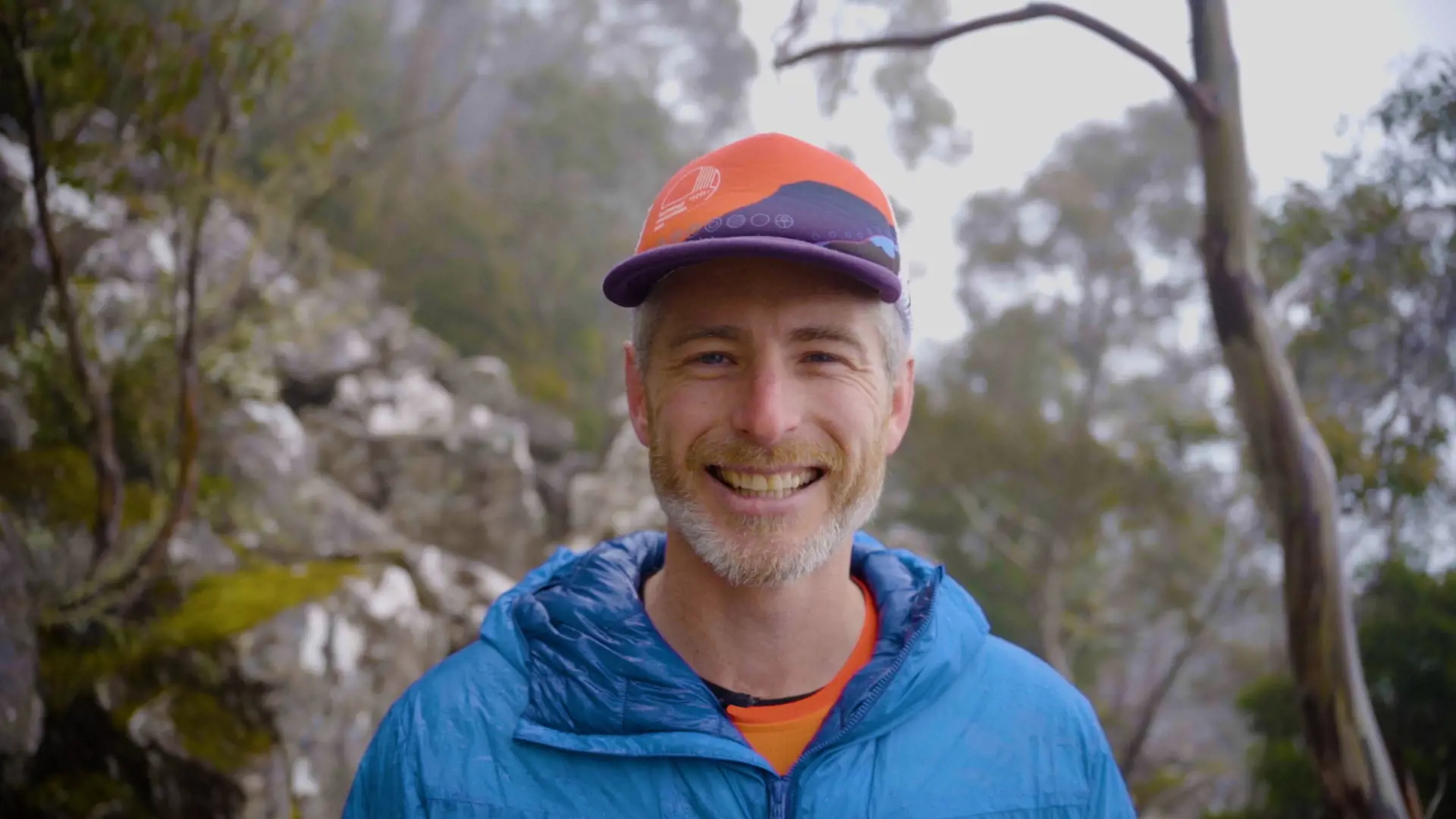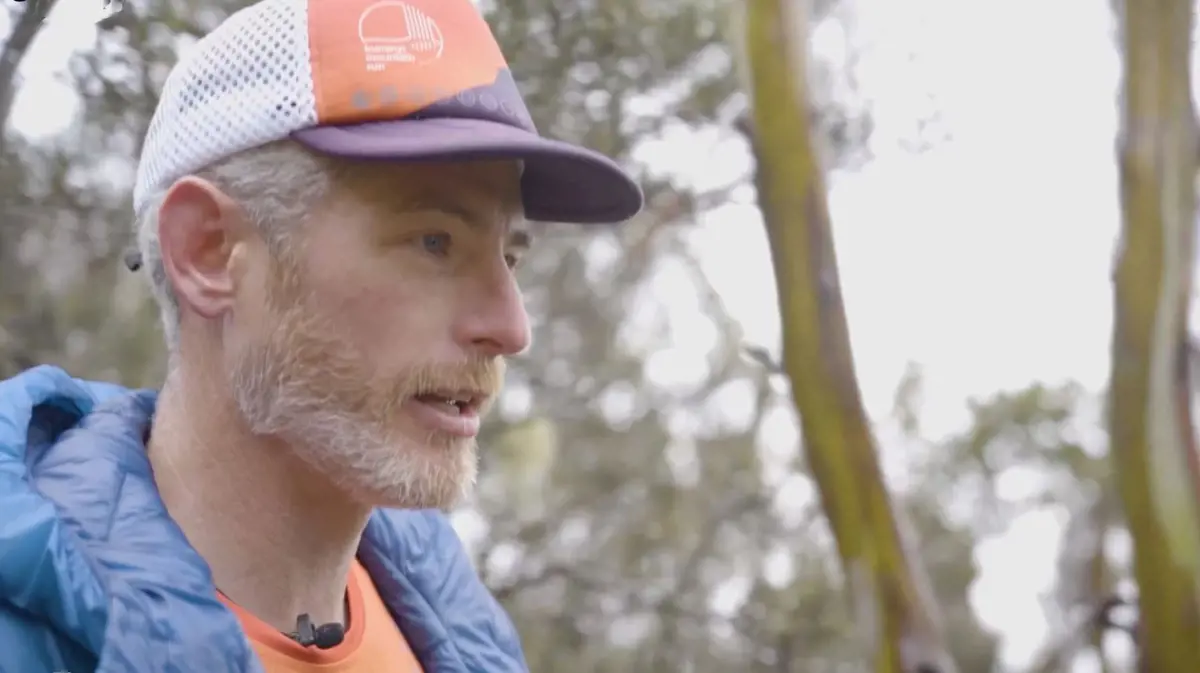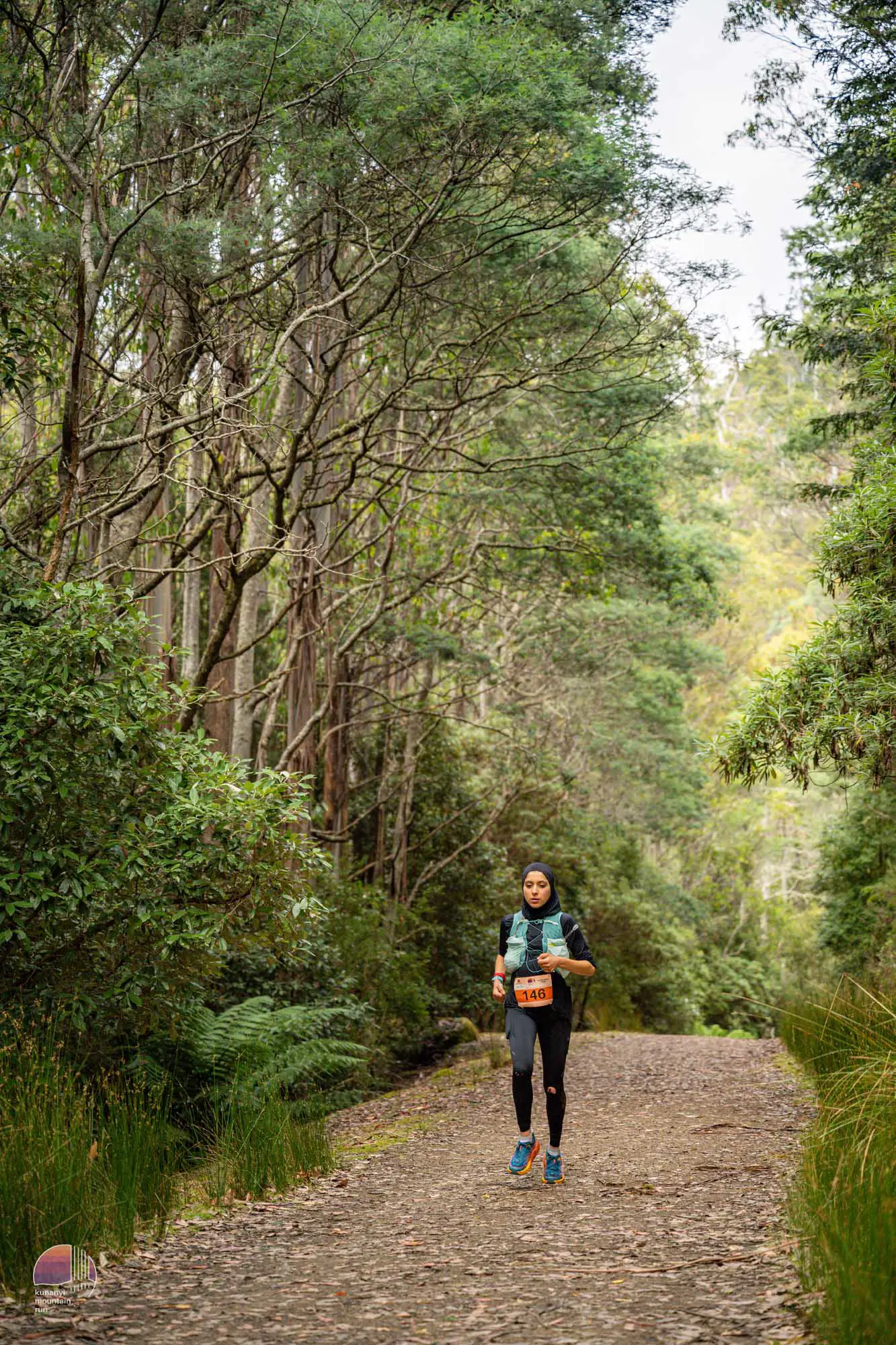
Pining for the wilderness? There’s a nature trail for every inclination in southern Tasmania.
Wherever you roam, biodiverse landscapes beckon. Just look at the island’s capital, Hobart: a city that hugs the River Derwent and splashes onto the foothills spilling down from mighty Kunanyi / Mount Wellington.
This mountain is a ubiquitous figure in Hobart, shaping the lives of those in its presence. For Lincoln Quilliam, founder of trail-running festival Kunanyi Mountain Run, childhood was a collage of creek-swimming, tree-climbing, mountain biking and rock-clambering.
“Kunanyi Mountain Run was born because of that love of the mountain that I grew up with,” he reflects.
Whether running or hiking, Quilliam’s connection to Tasmania deepens with each footstep.
That focus and connection is so invigorating. Everything else is just stripped away – so it’s just you and nature.
And he’s not alone.
Tasmania has long been a haven for trail runners, with Kunanyi / Mount Wellington’s first recorded event dating back to 1903.
Whether you’re into hardcore slogs, cruisy jogs or meditative ambles, Quilliam knows the right southern nature trail for you.
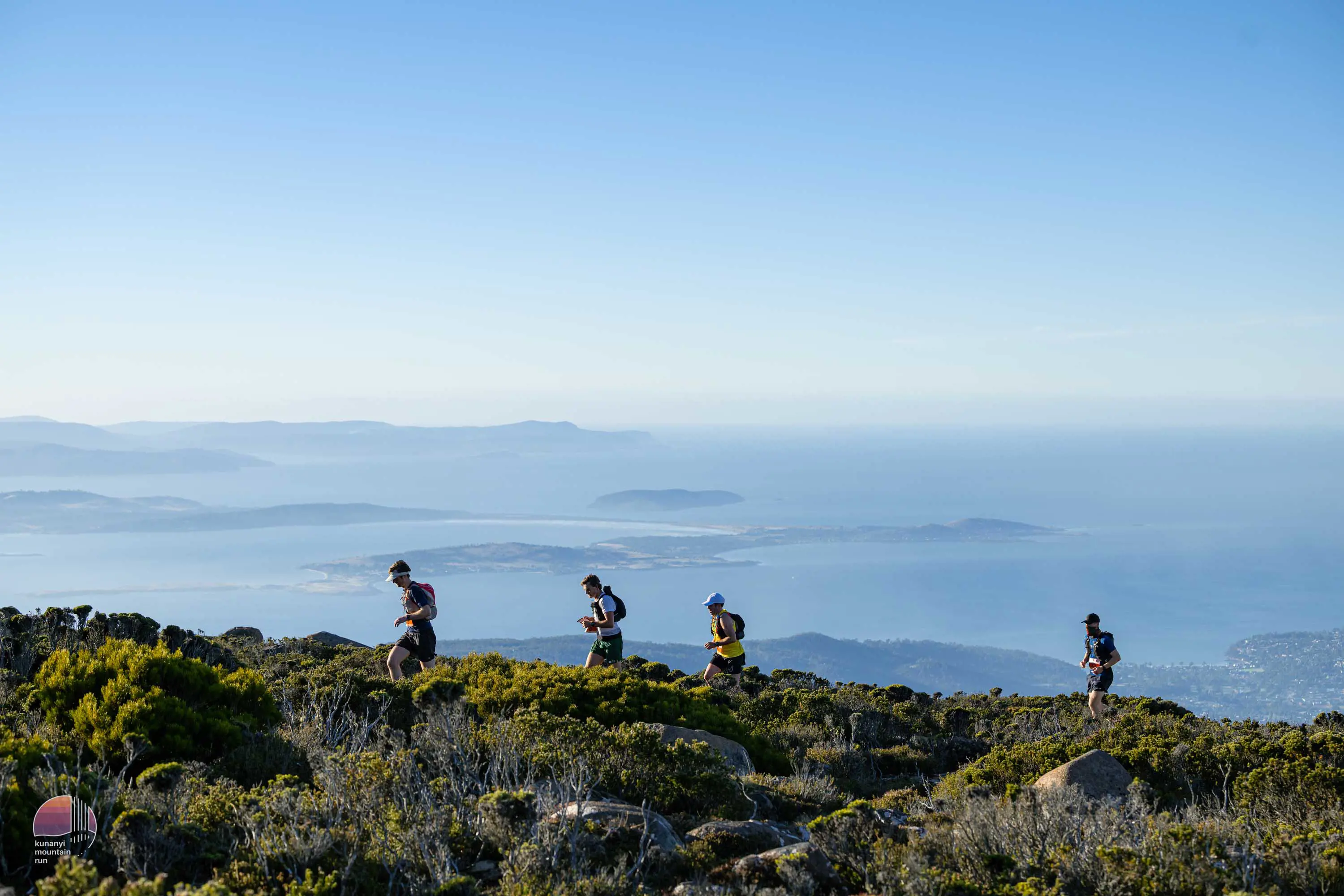
Connect with Kunanyi
Fancy scrambling up the steepest route on Kunanyi / Mount Wellington, or jogging a 66km trail with a 3780m elevation? About 1000 runners tackle the testing trails of Kunanyi Mountain Run every March though there are less gruelling options on offer, such as the 9km Foothills Track and Kids Run.
Dash amongst fern glades, eucalypt woodlands and alpine flowers while absorbing the stories of the mountain’s heritage.
“We are opening up the door to mountain culture,” Quilliam says. “Kunanyi Mountain Run provides an open and supportive platform for Palawa (Tasmanian Aboriginal) people to share story and culture on their terms.”

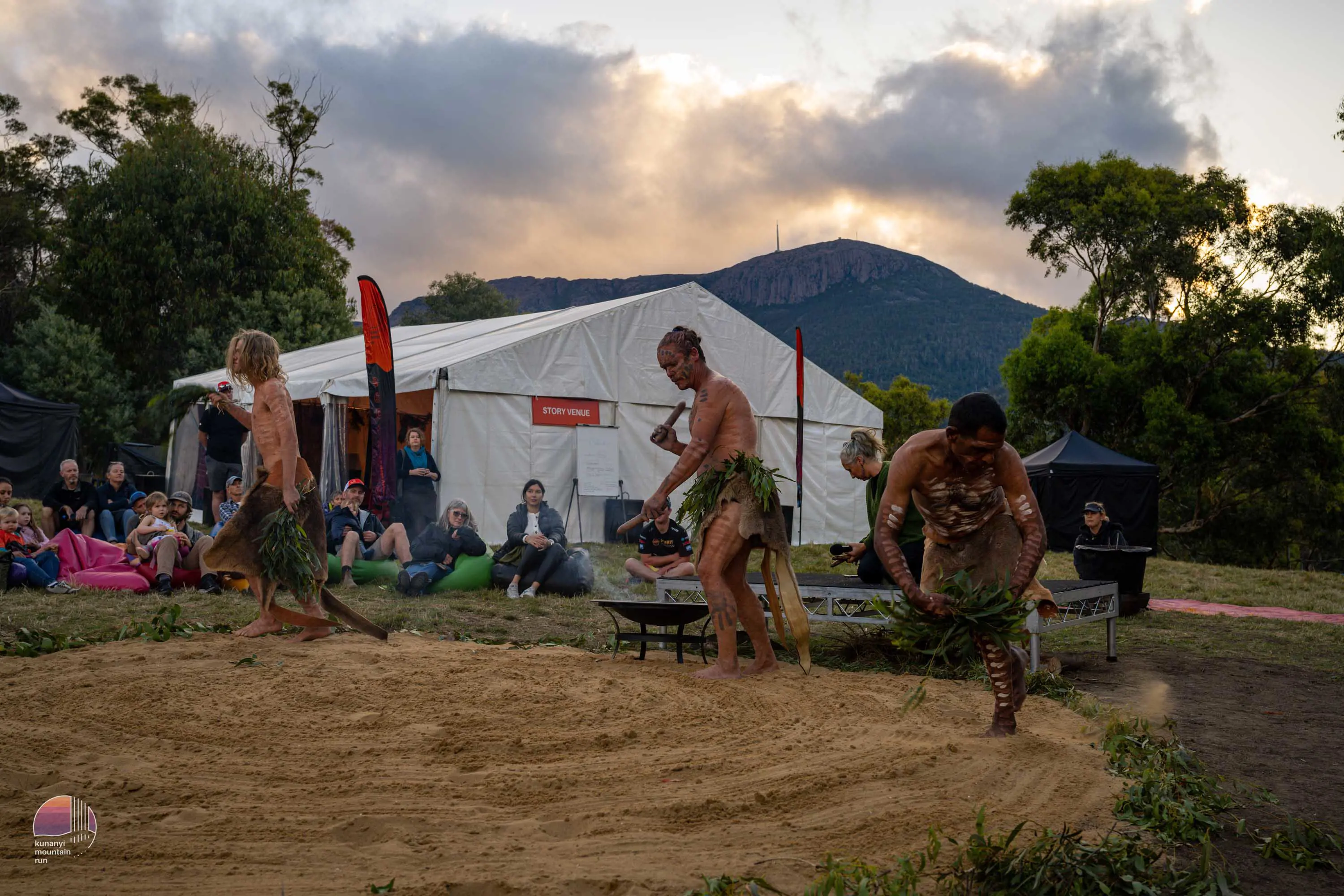
Palawa ceremony, Kunanyi Mountain Run
Year-round, a favourite Kunanyi / Mount Wellington route for Quilliam is the Organ Pipes Track, strewn with dolerite boulder fields and endemic Tasmanian flora.
“Super runnable, and it takes you past amazing vistas,” Quilliam says. “Another much more challenging trail is the Cathedral Rock and Montagu Thumbs.” Soaring high above the city, discover a majestic ridgeline with views as far as the eye can see towards Bruny Island and the Huon Valley.
A little lower down the mountain, Quilliam suggests the mossy Pipeline Track for a smooth, flat jog. Another highlight, Fern Glade offers moody rainforest, deep-green hues and crisp air.
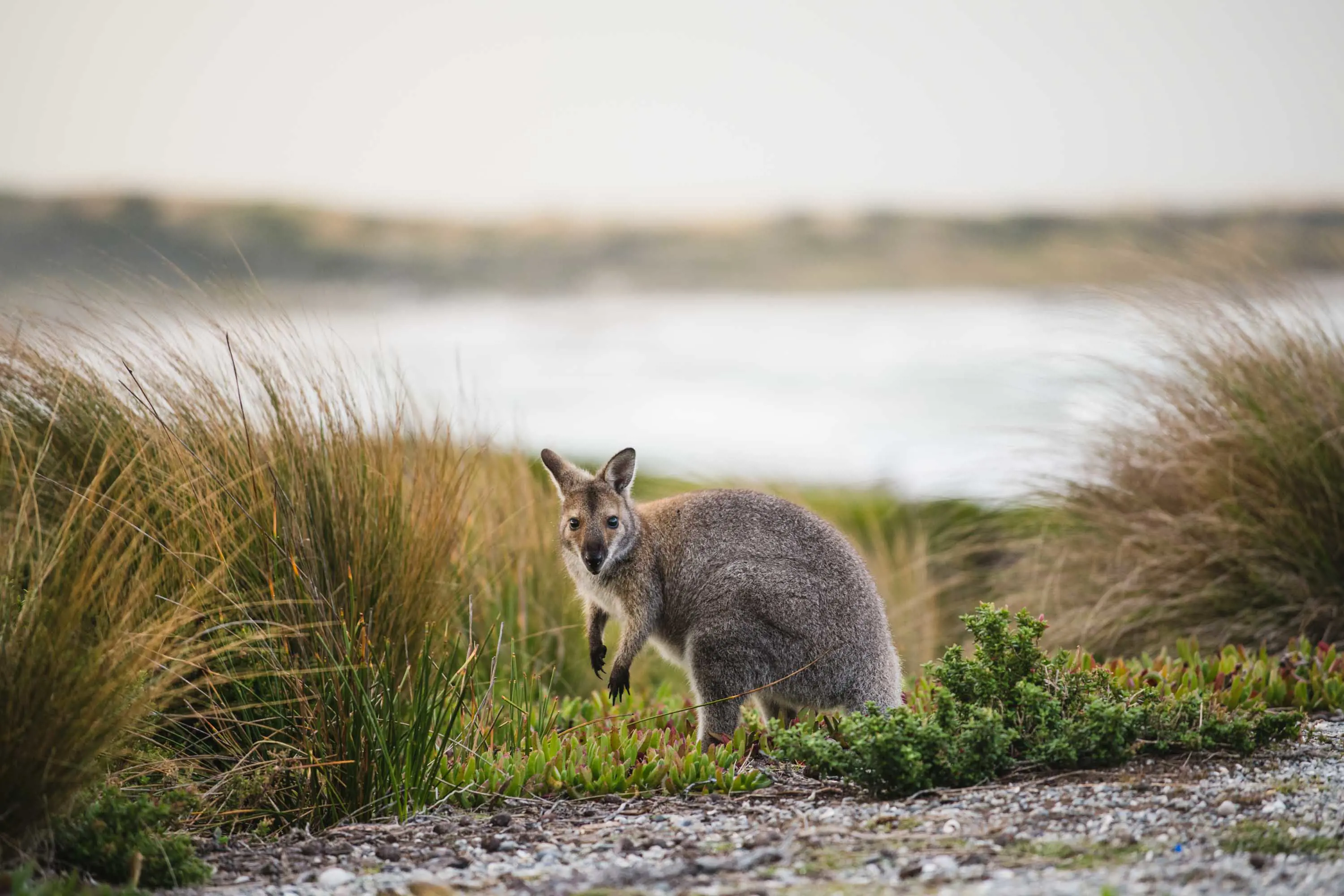
Run wild with the animals
Further afield, Quilliam’s recommendations span the far-reaching landscapes of southern Tasmania.
Looking to soundtrack your morning jog with birdsong?
“On any run in southern Tassie, or any trail, there’s generally some wildlife, particularly around dawn and dusk,” Quilliam says.
Hear the arcing cadence of black cockatoos squawking overhead, or race with darting wallabies. Quilliam’s idea of “wallaby heaven” sits across the River Derwent on Hobart’s Eastern Shore. Bending from Risdon Brooke Dam into 7km of conservation bushland, the Mount Direction track features idyllic Derwent Valley views, and a healthy wallaby population. About a 30min drive from here is the Meehan Range Nature Recreation Area – another haven for these zippy creatures, doubling as a neat network of mountain bike trails.
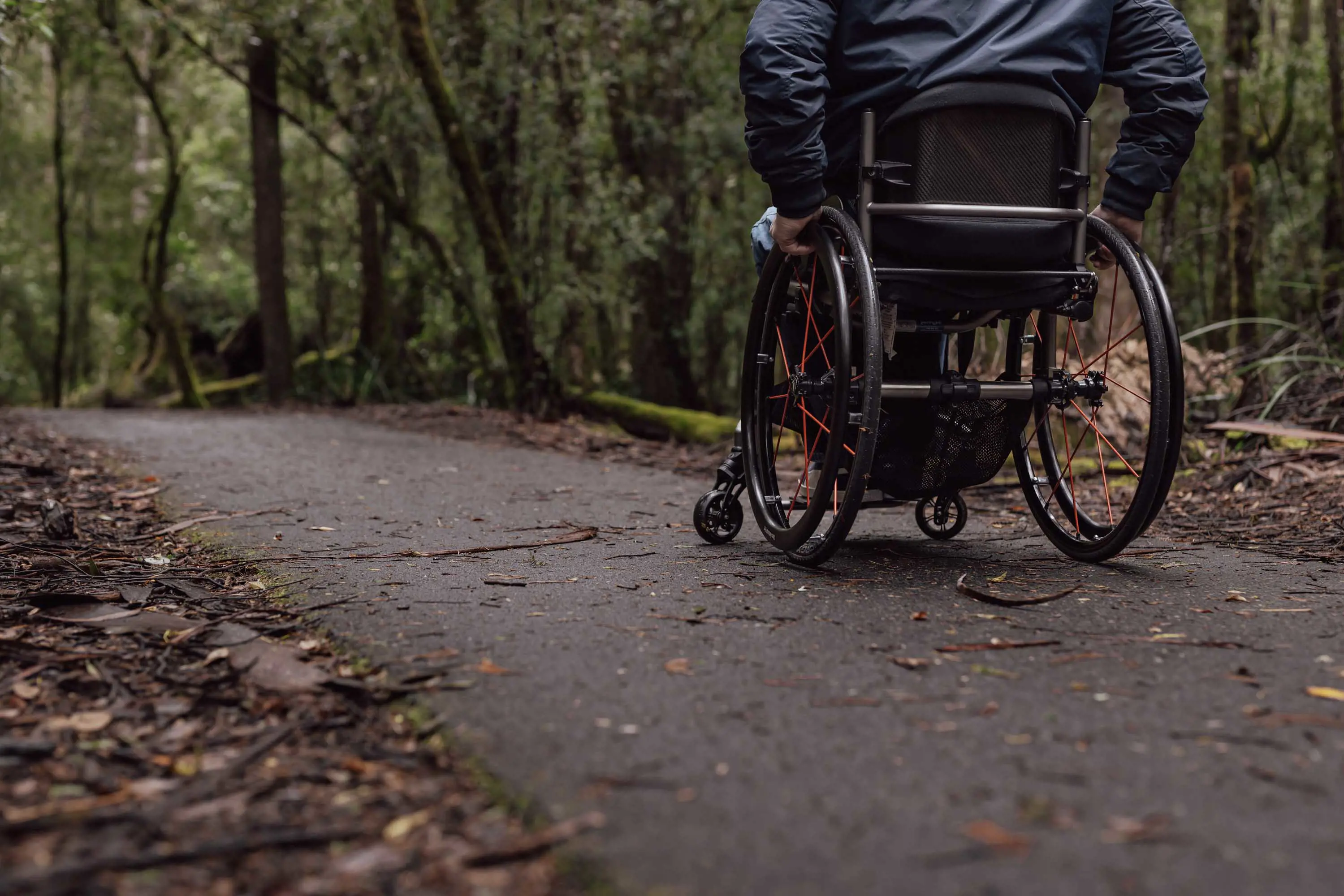
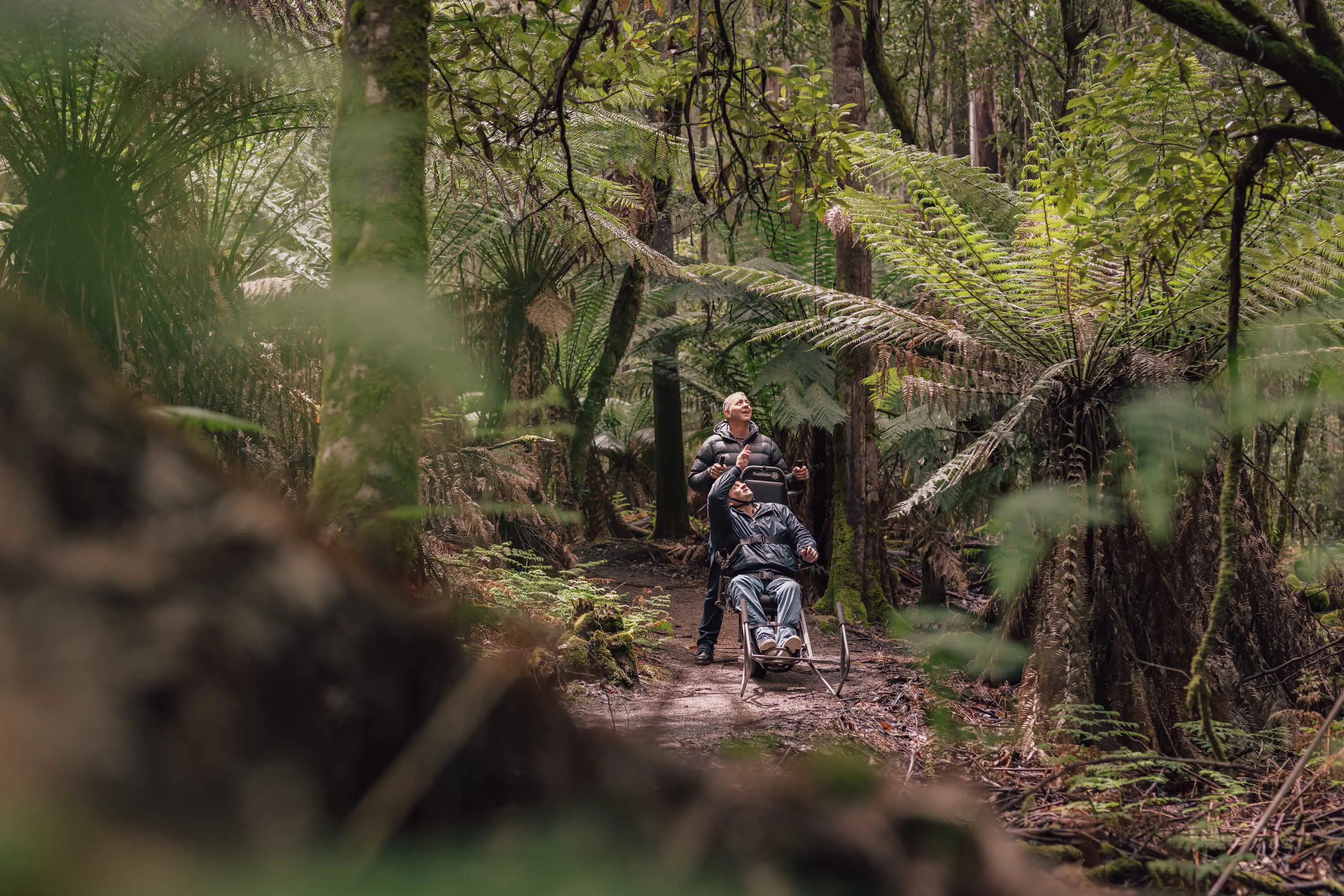
Using a TrailRider on the Tall Trees Walk
Trails for all
Everyone deserves a slice of Tasmania’s breathtaking trails. Discover knock-out scenery and atmospheric wilderness on statewide wheelchair accessible tracks such as Cape Tourville Lookout on the east coast, Cradle Mountain Rainforest Walk in the north west and – in Quilliam’s neck of the woods – Russell Falls.
“The most beautiful and easy-to-access, wheelchair-accessible walk in southern Tassie is probably Russell Falls,” Quilliam says. He suggests checking out the “big, powerful falls” after some rain.
Dog guides are welcome in national parks, while free TrailRider all-terrain wheelchairs are available for hire, allowing access to more rugged trails within Freycinet, Mount Field and Cradle Mountain-Lake St Clair national parks (bookings recommended).
For families strolling with kids in tow, Mount Field National Park contains top-notch tracks on Quilliam’s radar, including the “amazing big forests” of the Tall Trees Walk near Russell Falls.
“Then drive up to Lake Dobson and you’ve got a beautiful alpine circuit with pandani groves and snow gums,” he says.
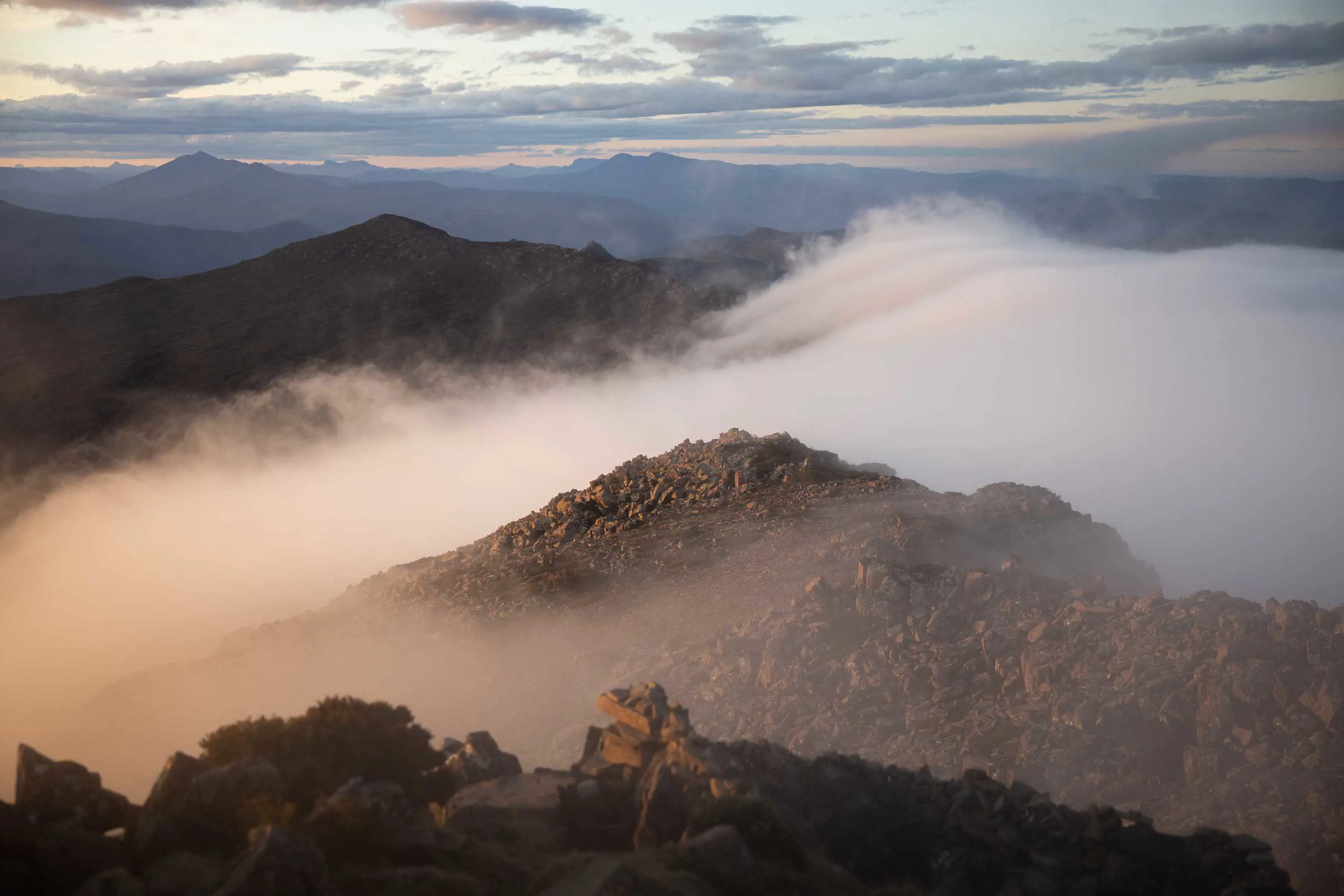
Jogs with a view
Wherever you trot, stellar scenery is sure to follow.
“Every trail’s got an epic view in Tassie,” Quilliam says. That said, he’s partial to the landscapes of the wild south west.
One of Quilliam’s top picks, feel transported into another world on the Hartz Peak track. Depending on the season, the expansive terrain may be dotted with pineapple grass, pandani and pinkberry, or blanketed with snow. A 7.4km journey climbing 400m, Hartz Peak offers 360-degree views of south-west mountaintops, curling and cresting into the horizon like ocean waves.
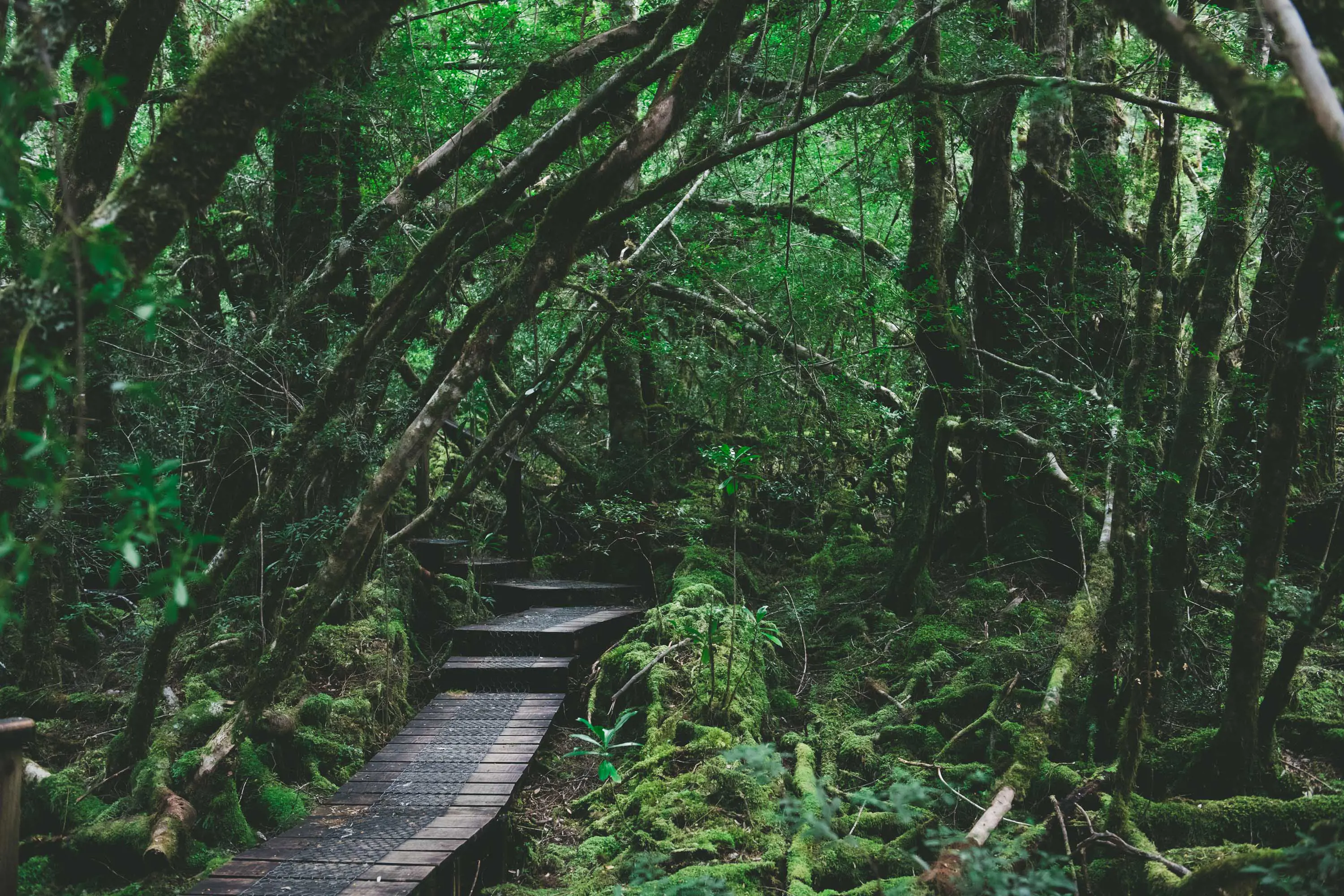
Go bigger still at the Sentinel Range summit – it’s 3.8km, with a hefty 630m elevation. Experienced adventurers can take in panoramic vistas high above the remote south-west wilds: a worthy reward for a steep trek.
For wondrous scenery within Southwest National Park without the intensity, Creepy Crawly Trail is a favourite of Quilliam’s; a 1km boarded path into cool-temperate rainforest. Moss clings to the trees and sodden logs in this viridescent realm.
“There are so many epic adventure-runs out here in Tassie,” Quilliam says, “and I've got the next five years of holidays booked with them.”
Kunanyi Mountain Run FAQs
When is the Kunanyi Mountain Run?
Kunanyi Mountain Run enlivens Hobart’s famous mountain and its many trails every March. Across three days, novice trail joggers and longtime ultra runners gather to hear sacred stories about Kunanyi / Mount Wellington from the Palawa (Tasmanian Aboriginal) community and immerse in the mountain’s sensory surprises – from rugged alpine outcrops to lush, forested foothills. This mountain-running festival is a Golden Trail National Series run, welcoming elite competitors into Hobart’s trail-running culture. Find more information here.
When is the best time to go walking in Tasmania?
Any time’s a fine time to go walking in Tasmania, but different seasons bring different perks. In summer, the trails are dry, sunny and warm – ideal for heated hikes and refreshing swims. Autumn brings an earthy scent and mild conditions. Search for delicate fungi and orange-tinted plants, including the fagus: Tasmania’s famed deciduous beech. Winter’s crisp air and rain make for invigorating hikes to the island’s many waterfalls. Or soak up the sunshine and floral aromas in spring, when native flowers colour the landscape and seasonal showers produce eye-catching rainbows.
How can I walk, hike and trail run responsibly?
For your own safety, and the conservation of rare flora and fauna, it’s important to walk, hike and trail run responsibly in Tasmania. National parks are particularly important havens protecting wildlife, plants and cultural values – visitor centres can equip you with parks passes, important information and refreshments. Stick to the formed tracks, leave all natural objects behind and take your rubbish with you. Only camp at official sites and adhere to fire restrictions. Respect historical artefacts and keep a respectful distance from the wildlife. Read more about hiker tips and safety information.
